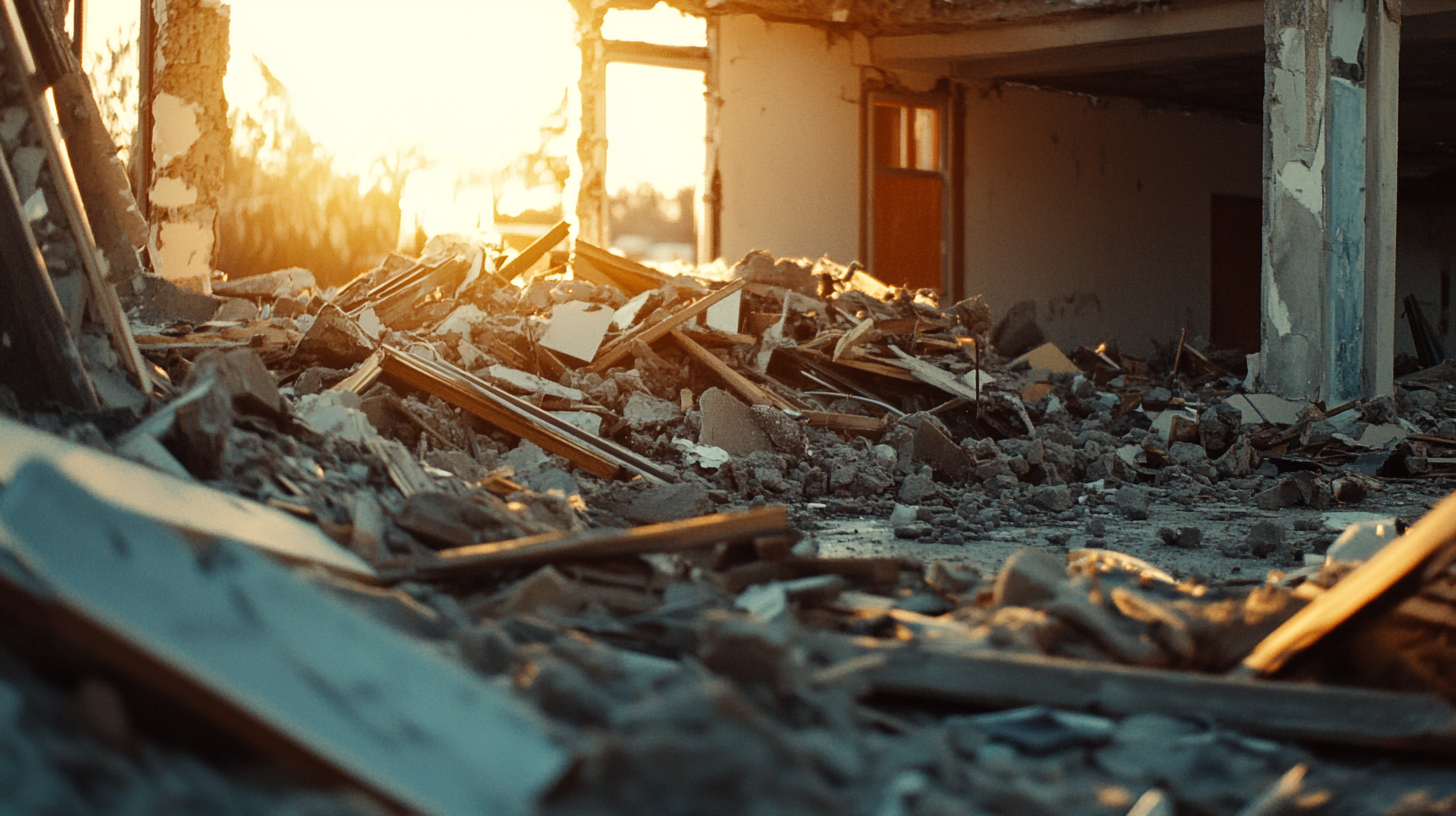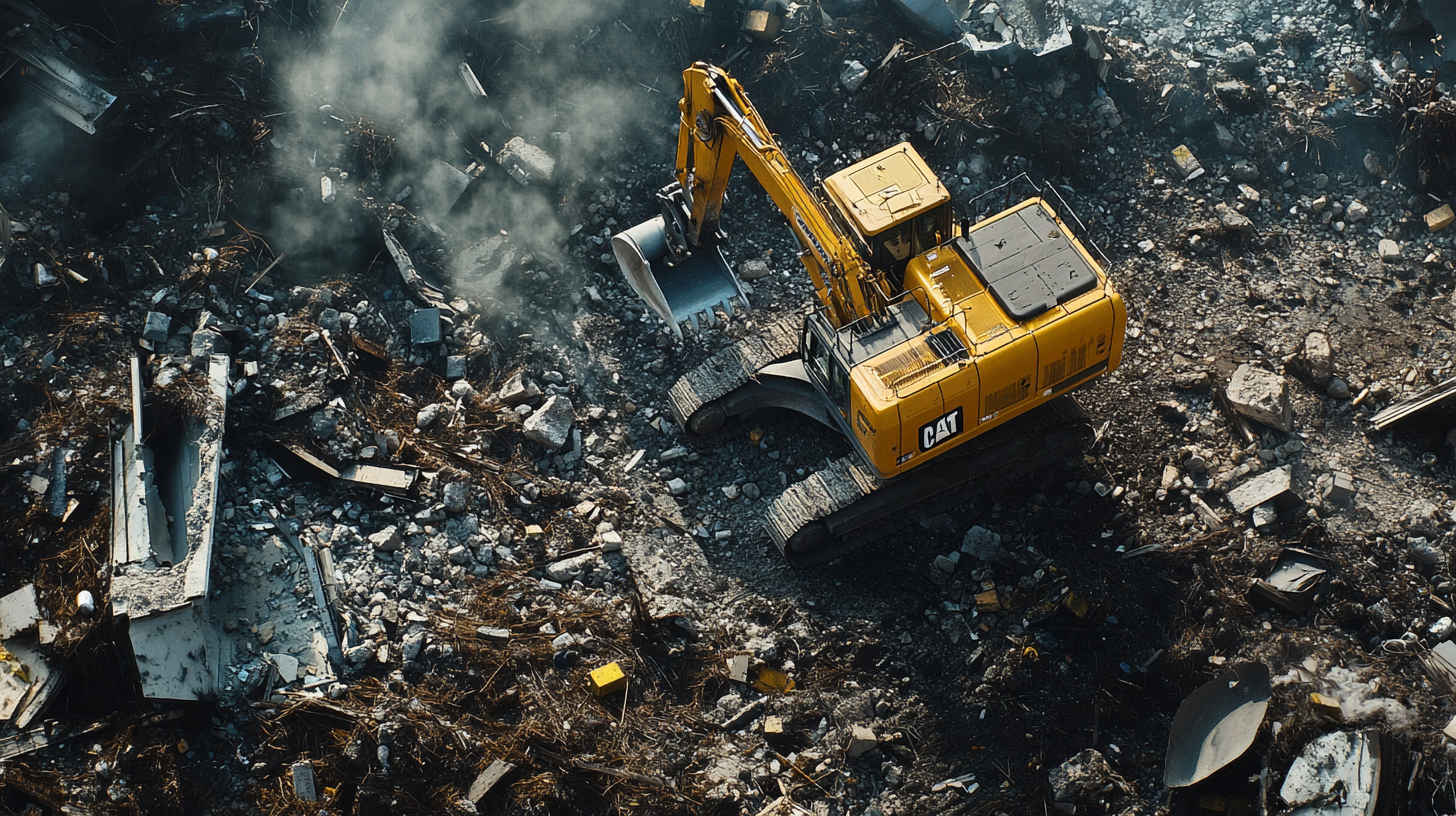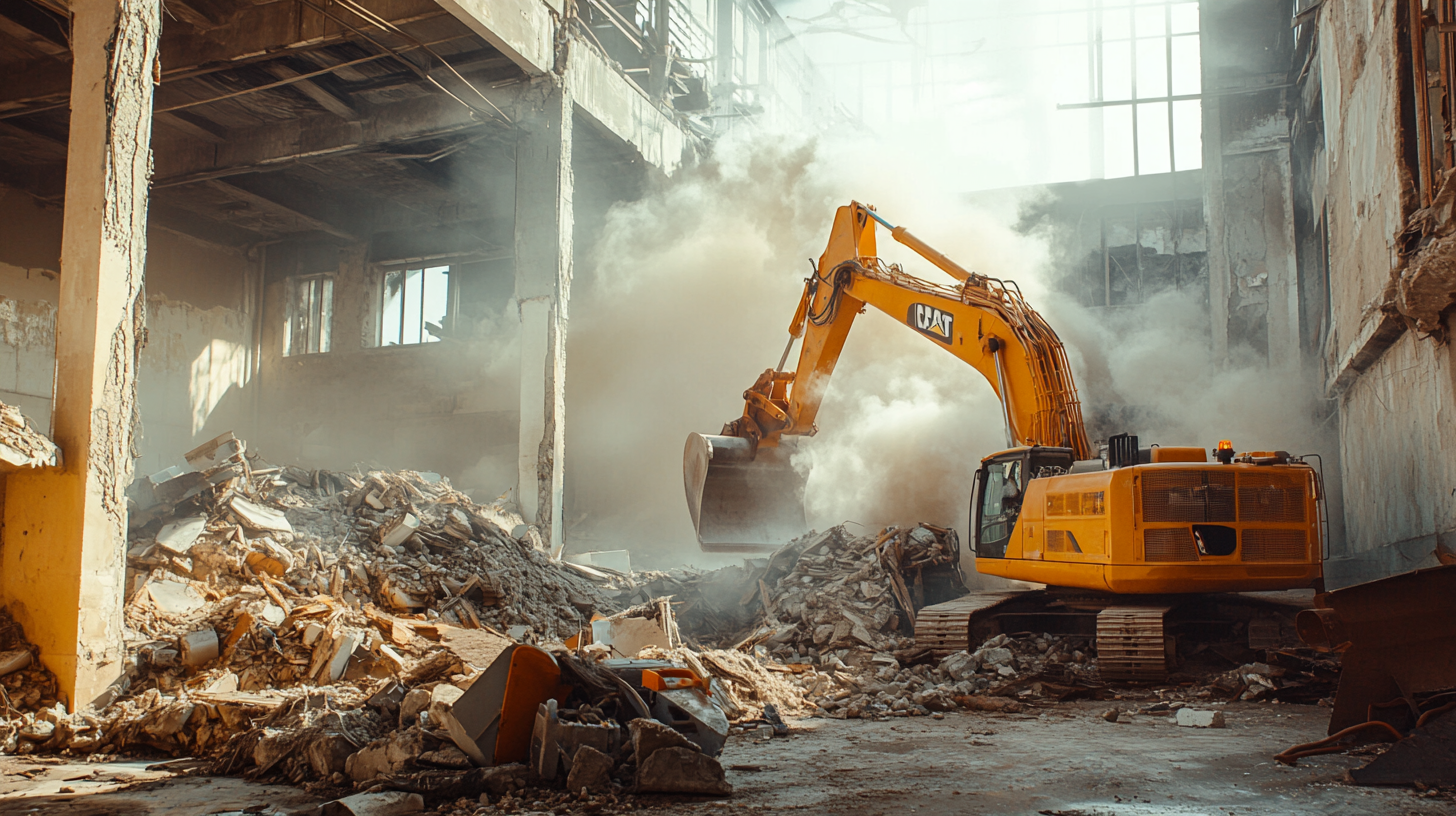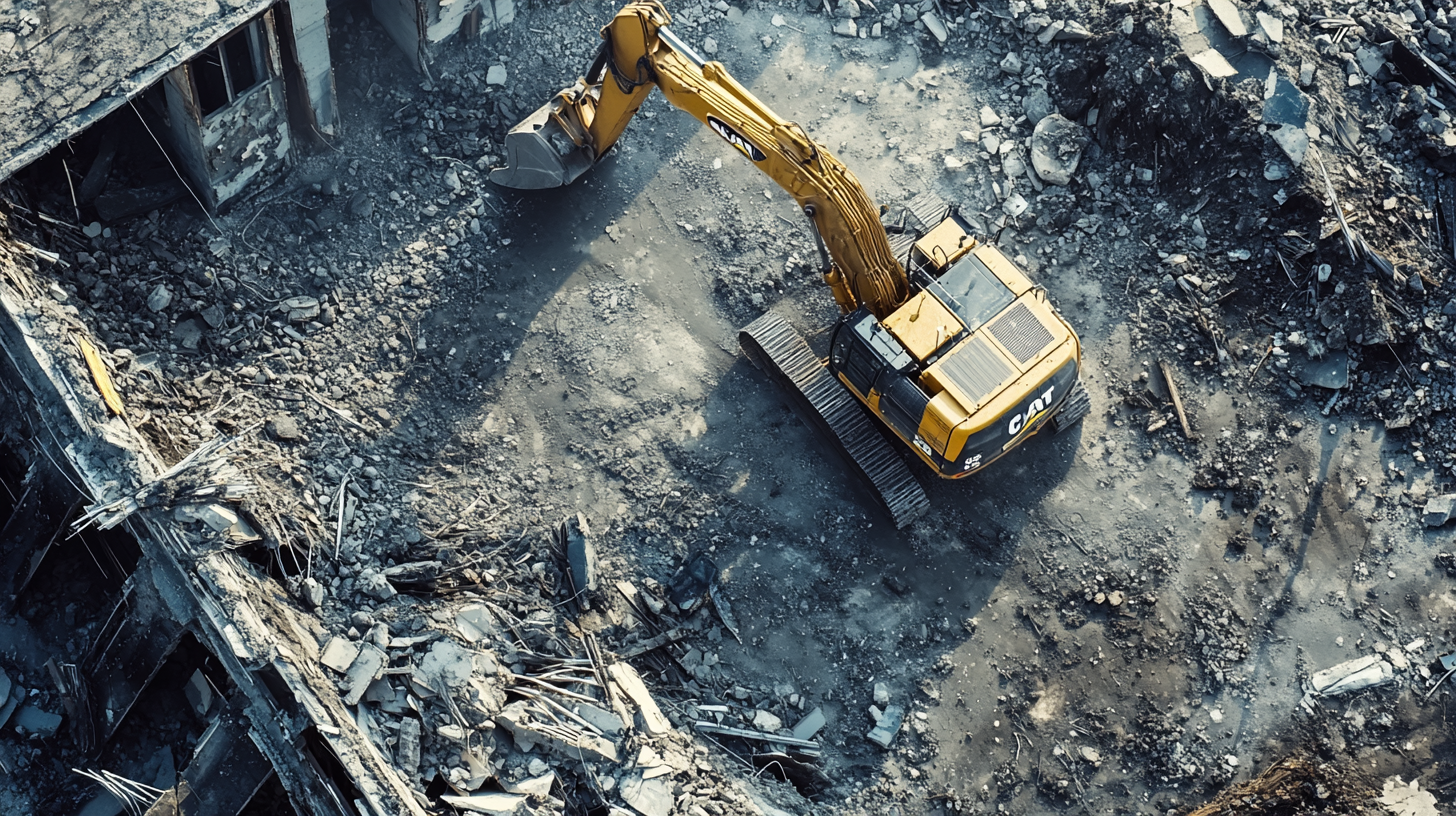
Homeowners and builders alike understand the critical role of maintaining the integrity of a residential structure. One key component often overlooked is the moisture barrier— a fundamental element that ensures the durability and safety of homes. Moisture barriers are designed to prevent water and vapor from penetrating walls, floors, and ceilings, which can cause severe damage to the building materials and lead to mold growth, compromising both the building's structure and indoor air quality.
In this blog post, we will delve into what moisture barriers are, exploring their various types and functions. We'll also discuss why these barriers are essential in constructing resilient and energy-efficient homes, protecting them against the diverse challenges posed by different climates and environmental conditions. Understanding moisture barriers is not just about safeguarding a building; it's about ensuring a healthy, sustainable living environment for all occupants.
Join us as we uncover the layers that keep your home dry and durable, ensuring that your sanctuary stands strong against the elements.
What is a Moisture Barrier?
Definition and Types of Moisture Barriers
A moisture barrier is a protective layer installed in various parts of a residential building to prevent water vapor from entering and damaging the structure. Often confused with vapor barriers, moisture barriers are specifically designed to block moisture in its liquid state, such as rain or ground water, from penetrating building materials. Vapor barriers, on the other hand, are used to prevent the diffusion of water vapor, which is water in its gaseous state, from entering an enclosed area and condensing into liquid.
Moisture barriers come in several forms, each suitable for different parts of a building and environmental conditions:
- Plastic Sheeting: Thick, durable plastic layers used primarily in foundations to block moisture from the soil.
- Coatings: Waterproof paints or sealants applied to exposed surfaces such as basement walls and floors.
- Membranes: Flexible sheets, often made of rubber or synthetic materials, that can be applied to roofs and walls to prevent rainwater penetration.
How Moisture Barriers Work
The effectiveness of moisture barriers is based on scientific principles that control the movement of moisture through building materials. By creating a physical block, moisture barriers prevent water entry, thus maintaining a dry state within the building’s critical structures. This is crucial for preventing the degradation of building materials, such as wood rot and corrosion of metals, and for inhibiting the growth of mold and mildew, which can significantly impact indoor air quality.
Proper moisture control is vital not only for the longevity and structural integrity of buildings but also for the health of its occupants. Moist areas are breeding grounds for mold and allergens, which can lead to respiratory problems and other health issues. By integrating moisture barriers into the building’s design, homeowners can ensure a healthier living environment and a sturdier building structure.
Benefits of Installing Moisture Barriers
Installing moisture barriers in residential buildings provides essential protection and efficiency gains. These benefits not only enhance the longevity of the building structure but also contribute to a healthier and more cost-effective living environment. Below, we explore the crucial advantages of incorporating moisture barriers into your home.
Protection Against Water Damage
Moisture barriers are specially designed to prevent water intrusion in vulnerable areas of a home, such as basements and crawl spaces. By blocking the entry of external moisture, these barriers safeguard against the common problems associated with water infiltration, including:
- Structural Deterioration: Water that seeps into foundational materials can weaken structural integrity over time, leading to costly repairs and unsafe living conditions.
- Mold and Mildew Growth: Moist environments are conducive to the growth of mold and mildew, which can degrade indoor air quality and pose health risks to residents.
The long-term benefits of installing moisture barriers include significant reductions in the risk of foundational damage. By maintaining a dry basement or crawl space, homeowners can avoid the extensive and expensive remediation often required after water damage occurs.
Enhancing Energy Efficiency
Moisture barriers also play a vital role in the thermal performance of a building. By keeping moisture out, these barriers help maintain consistent indoor temperatures, which in turn reduces the load on heating and cooling systems. This not only leads to lower energy consumption but also extends the lifespan of HVAC systems by reducing the need for excessive use. Key points include:
- Improved Insulation Performance: Moisture can impair the effectiveness of thermal insulation. Dry insulation materials perform better and contribute to overall energy efficiency.
- Reduced Heating and Cooling Costs: With improved insulation and moisture control, buildings require less energy to heat and cool, resulting in lower utility bills.
Illustrative case studies highlight the effectiveness of moisture barriers in enhancing energy efficiency:
- Case Study 1: A residential project in a high-humidity area showed a 15% reduction in heating and cooling costs after retrofitting with moisture barriers.
- Case Study 2: In another example, a homeowner noticed improved HVAC efficiency and a 20% savings on energy bills following the installation of a comprehensive moisture barrier system.
By installing moisture barriers, homeowners not only protect their property from water damage but also enhance its energy efficiency, leading to long-term savings and improved comfort.
Planning Moisture Barrier Installation
Proper planning is crucial to the successful installation of moisture barriers in residential buildings. This section guides homeowners through the initial steps of assessing their specific needs and choosing the right materials to ensure effective moisture control that lasts.
Assessing Your Needs
Before installing a moisture barrier, it’s essential to understand the unique requirements of your building and its environment. Follow these steps to determine the most suitable type of moisture barrier for your home:
- Climate Consideration: The climate you live in greatly influences the type of moisture barrier you need. For example, areas with high rainfall or high humidity levels require robust waterproofing solutions to handle potential water intrusion.
- Building Design and Use: Consider the design of your building and how different areas are used. Basements, attics, and crawl spaces might have different needs based on their exposure to moisture and their ventilation status.
- Moisture Evaluation: Assess existing moisture levels within your home. Use moisture meters to detect high humidity areas or signs of moisture problems, such as mold growth or musty odors. Identifying these problems will help pinpoint critical areas that need protection.
- Source Identification: Locate potential sources of moisture, such as leaky pipes, poor drainage, or proximity to water bodies. Understanding these sources is vital for choosing a barrier that addresses specific moisture entry points.
Taking the time to thoroughly assess your needs will ensure that the moisture barrier you choose will effectively protect your home from moisture-related damage.
Choosing the Right Materials
Selecting the appropriate materials for your moisture barrier involves understanding the differences in material properties and how they relate to your specific needs. Here’s how to compare and choose:
Material Types: Moisture barriers come in various materials, each with advantages and best use scenarios.
- Polyethylene Sheet: Best for crawl spaces and basements where high moisture resistance is needed.
- Liquid Membranes: Suitable for uneven surfaces and areas requiring flexible application, like around fixtures.
- Bituminous Membranes: Ideal for external walls and roofs, providing excellent waterproofing.
Durability and Performance: Look for materials that offer long-term durability and resistance to environmental factors like UV light and temperature changes. The longevity of the material ensures that you won’t have to replace your moisture barriers frequently.
Specific Needs Tailoring: Match the barrier material to your specific situation based on the moisture evaluation and source identification you performed. For instance, areas with direct water contact might require more robust solutions than areas that only deal with ambient moisture.
Tips for Selecting Materials:
- Always consult with building professionals or contractors specializing in moisture prevention.
- Consider eco-friendly options that provide effective moisture control without harming the environment.
- Check for product warranties and manufacturer guarantees as indicators of quality and durability.
Choosing the right materials tailored to your needs not only enhances the effectiveness of moisture barriers but also contributes to the overall health and longevity of your building.
Step-by-Step Guide to Installing Moisture Barriers
Installing a moisture barrier is a crucial step in protecting the integrity of your home from moisture damage. This comprehensive guide provides detailed instructions for preparing the installation site and executing the installation, ensuring you achieve optimal results.
Preparing the Installation Site
Proper preparation of the installation area is vital to the success of your moisture barrier. Here’s how to prepare different parts of your home:
- Assessment of the Area: Begin by assessing the specific area—whether it's a crawl space, basement, or other parts of the home. Look for any signs of moisture, such as damp walls or pooling water, and identify any structural issues.
- Cleaning: Thoroughly clean the area where the moisture barrier will be installed. Remove any debris, dust, or standing water. This step ensures that the barrier adheres properly and functions effectively.
- Repairs: Before proceeding with the installation, repair any existing damage such as cracks in the foundation or leaks. This step prevents further moisture ingress and ensures the durability of the barrier.
- Drying: Ensure the area is completely dry before installing the moisture barrier. Use dehumidifiers or fans if necessary to remove excess moisture from the air and surfaces.
The importance of these preparatory steps cannot be overstated. A clean, dry, and stable
installation site helps the moisture barrier perform its function effectively, preventing future moisture-related issues.
Installation Techniques
Following the right techniques is crucial for effectively installing moisture barriers. Here are detailed steps tailored for various parts of your home, along with the tools and equipment needed:
Tools and Equipment:
- Utility knife or scissors for cutting the barrier material
- Staple gun or tape for securing barriers in place
- Caulking gun and sealant for sealing joints
- Protective gloves and safety glasses for personal safety
Installing in Crawl Spaces:
- Lay the barrier material flat on the ground, overlapping edges by at least 6 inches to ensure complete coverage.
- Secure the barrier to the ground using landscape staples or a similar fastening method.
- Extend the material up the walls of the crawl space, at least a few inches, and secure it with tape or an adhesive.
Installing in Basements:
- Start by applying a sealant along the base of the walls to prevent water seepage.
- Roll out the moisture barrier material on the walls, starting from the bottom and moving upward.
- Overlap each layer of barrier material by at least 12 inches as you go up the wall.
- Secure the barrier to the walls using a heavy-duty adhesive and/or mechanical fasteners.
Final Checks:
- Once installation is complete, inspect the entire area to ensure that all seams are properly sealed and there are no gaps.
- Test the barrier by checking for moisture ingress after the next rain event or by using a moisture meter.
Common Mistakes and How to Avoid Them
Installing moisture barriers effectively is crucial to protecting your home from water damage and ensuring optimal energy efficiency. However, certain common errors can compromise the effectiveness of these barriers. Below, we highlight these frequent mistakes and provide guidance on how to avoid them.
Improper Sealing and Overlaps
One of the most critical aspects of moisture barrier installation is ensuring that all seams and overlaps are properly sealed. Failure to do so can lead to moisture seepage, which defeats the purpose of the barrier. Here are common errors and tips for correct installation:
Common Errors:
- Insufficient overlap between barrier sheets, typically less than 6 inches.
- Failure to seal the seams effectively, allowing moisture ingress at junctions.
- Using non-waterproof adhesives or tapes that fail when exposed to moisture.
Tips for Proper Sealing and Overlap:
- Always overlap sheets by at least 6-12 inches, depending on the barrier material and the area's moisture exposure.
- Use high-quality, waterproof tapes or sealants designed for moisture barrier applications to seal overlaps and edges.
- For critical areas like basements and crawl spaces, consider double-sealing the seams—tape first, followed by a bead of sealant along the edge.
Ensuring proper sealing and overlap during installation will significantly enhance the effectiveness and longevity of your moisture barrier.
Ignoring Local Building Codes
Adherence to local building codes is not only a legal requirement but also a crucial factor in ensuring that moisture barrier installations meet safety and efficiency standards. Here’s how you can comply:
The Importance of Building Codes:
- Building codes are established to protect public health, safety, and general welfare as they relate to the construction and occupancy of buildings.
- Codes vary significantly by location, reflecting the unique environmental and geological conditions of the area.
How to Check and Comply with Local Requirements:
- Research: Start by visiting your local building department's website or contacting them directly to get information on relevant codes and permits required for your project.
- Professional Consultation: Consider hiring a local contractor or consultant who is familiar with the codes to ensure your installation meets all legal requirements.
- Inspections: Schedule inspections as required by local regulations to certify that your installation complies with local building standards.
Understanding and following local building codes not only ensures legal compliance but also guarantees that your moisture barrier installation is safe and effective, protecting your investment in your home.
FAQs
-
What is a moisture barrier?
A moisture barrier is a protective material installed in buildings to prevent water and moisture from penetrating walls, floors, and ceilings, protecting the structure from damage, mold growth, and deterioration.
-
Why are moisture barriers important?
Moisture barriers are crucial for maintaining the structural integrity of a building, preventing moisture-related damage such as rot and mold, and ensuring indoor air quality remains healthy by limiting moisture and associated allergens.
-
Where should moisture barriers be installed?
Moisture barriers should be installed in areas prone to moisture exposure, including basements, crawl spaces, bathrooms, and around the building foundation. The specific areas of installation can depend on the building's design and the local climate.
-
How do I choose the right moisture barrier?
Selecting the right moisture barrier involves considering the material type (e.g., plastic sheeting, coatings, membranes), the specific moisture challenges of your location, and the particular needs of the building area where it will be applied. Consulting with a professional can help ensure the best choice for your situation.
-
When should moisture barriers be replaced?
Moisture barriers should be replaced if they show signs of damage, such as tears or deterioration, or if there are ongoing moisture issues like mold growth or water leakage that suggest the barrier is no longer effective. Regular inspections can help determine the need for replacement.
Contact Bull City Crawlspace Today!
Bull City Crawlspace will do everything we can to ensure your experience with us is excellent.
Request A FREE Estimate
Request a Free Estimate Form
We will get back to you as soon as possible.
Please try again later.
Checkout Recent Post




Got a Question? We’re Here to Help.
You can arrange an appointment or make an enquiry by phone or email, orget in touch to us via our contact form.
Business Hours:
Monday - Friday 8:00 AM - 8:00 PM Saturday and Sunday: Closed
We're your local family owned, operated and licensed crawl space repair and waterproofing company.
919-724-4601
jon@bullcitycrawlspace.com
Services
NATIONWIDE LEADER
Claim you free crawl space consultation today by clicking the button below.
Contact Info
Business Hours:
Mon to Fri: 8:00am - 8:00pm
All Rights Reserved | Bull City Crawlspace

